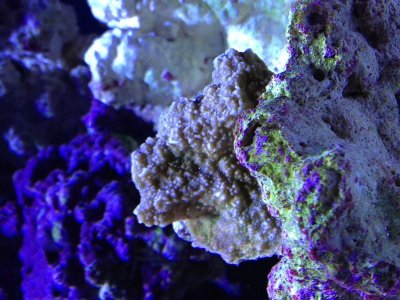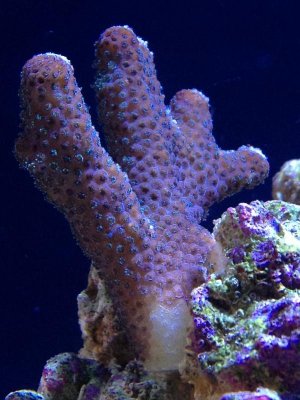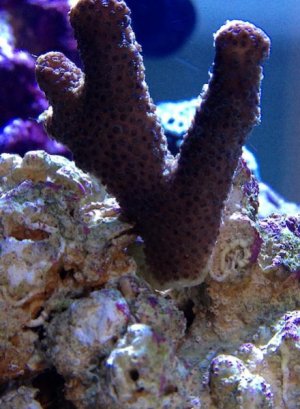Hi,
I'm just getting back into the hobby after a few years off. I'm attempting sps this time around but things aren't looking too well. I have an encrusting montipora that was bright green with tiny orange polyps that now is completely brown. I also have an acro that was a nice green color. It's beginning to brown out, show less polyp extension, oozing white slime and possibly losing tissue. I have no idea what I'm doing wrong here. I'm running GFO, carbon and purigen. I also have a great skimmer. I dose two part (kent nano) and perform water changes weekly. I've noticed my fluval m heater doesn't hold the temp very well at night so I just ordered an eheim jager.
Last thurs I went to the lfs and got the following test results:
KH: 7
Calcium: 390
Nitrate: 0
Phosphate: 0
Salinity: 1.022 (I know it's a bit low, I've been topping off a little less)
I'm just getting back into the hobby after a few years off. I'm attempting sps this time around but things aren't looking too well. I have an encrusting montipora that was bright green with tiny orange polyps that now is completely brown. I also have an acro that was a nice green color. It's beginning to brown out, show less polyp extension, oozing white slime and possibly losing tissue. I have no idea what I'm doing wrong here. I'm running GFO, carbon and purigen. I also have a great skimmer. I dose two part (kent nano) and perform water changes weekly. I've noticed my fluval m heater doesn't hold the temp very well at night so I just ordered an eheim jager.
Last thurs I went to the lfs and got the following test results:
KH: 7
Calcium: 390
Nitrate: 0
Phosphate: 0
Salinity: 1.022 (I know it's a bit low, I've been topping off a little less)





